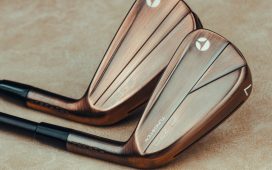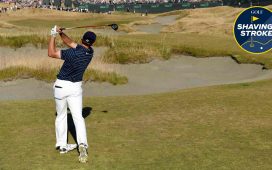As problems go, the one created when a player purchases a new, properly fit set of irons is a nice one to have. The trouble is, most golfers don’t know they have it.
The 2019 season was a big year in game-improvement irons. Cobra released the King F9 Speedback a few days before Wilson debuted the D7 in late 2018, then Callaway brought out the Apex, TaylorMade released the M5 and M6, and Ping showcased the G410 in late January. As spring turned to summer, PXG released the 0211 before Callaway made the Epic Flash irons available and Titleist unveiled the T200. In August, TaylorMade announced an update to the P790, and Cleveland in September released the Launcher HB Turbo irons.
All of these clubs tout features that make them more playable for mid- and higher-handicap golfers, including more stability and more distance. For players who shoot in the mid-80s and 90s, that sounds great. But getting a new set of irons that offer 10 or 12 more yards per club can create serious gapping issues at both the top and the bottom of the set.
For example, let’s say that for the past few seasons you hit your old 9-iron 130 yards, the pitching wedge that came with your irons about 115 yards and your sand wedge about 90 yards. Using your new irons, you hit your 9-iron 140 yards and your pitching wedge 125. By getting properly fit and adding distance with your new clubs, there is now a 35-yard gap between your pitching wedge and your sand wedge. That’s massive, and it will force you to play a lot of half- and partial-swing approach shots, which is tricky.
Some golfers understand that part of the issue, but few realize that when you enhance the distance of your irons you may also pinch the gap between your longest iron and your first hybrid or fairway wood.
So, continuing the example, if you had been hitting your old 4-iron 175 yards but now hit your new 4-iron about 185 or 190, there might only be a 3- or 5-yard difference between your new 4-iron and your hybrid.
It’s a messy issue that does not get talked about a lot, but if you are going to get serious about your game and your equipment, you have to look at your set holistically. Buying irons is going to rock the boat, hopefully in a positive way, but every club has to have a purpose and has to fit logically within the set. Having two clubs that hit the ball to a nearly identical distance doesn’t make sense. Neither does having a big gap between your wedges.
A good custom fitter can help either adjust your clubs to make your set work or offer suggestions on what combination of clubs will create logical gap progressions. The answer might be as simple as adding a gap wedge, adjusting the hosel setting in your hybrid or taking some loft off a long iron. The only way to know is to get on a launch monitor and see what the numbers show.
The most important thing is learning if your new irons have created gapping issues, understanding those pitfalls and developing a plan on how to play around them or fix them.








